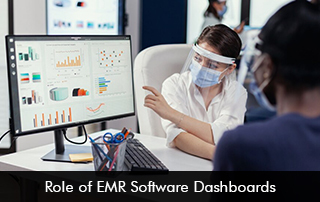The various Electronic Medical Records (EMR) Software dashboards are instrumental in managing patient data and assist in getting the right information to the right person. The EHR Software dashboards are graphical interfaces that give real-time patient details, metrics, and other crucial clinical data. Used in healthcare settings, their systematic and graphic means of handling the data can greatly enhance the processes and outcomes of care.
Types of EMR Software Dashboards
Patient Dashboard: Ensures the practitioner has a well-rounded look at the patient’s records, past medical history, lab results, and current management. It enables physicians to navigate to areas of key information smoothly and easily to improve patient care delivery.
Clinical Dashboard: The clinical electronic medical records software dashboard is primarily for clinical productivity. It displays patients’ status and results, medications, and tendencies. The dashboard assists the providers in noticing the efficacy of treatments.
Appointment Scheduling EMR Software Dashboard: The dashboard reduces problem areas in terms of coordinating and organizing patient appointments. Many of the time it can also incorporate reminders and automated notifications for the patients.
Billing and Financial Dashboard: For seamless Management of bills, insurance, and payments the billing EHR Software dashboard is utilized. It can help track the time intervals at which bills have been raised, the insurance claims made and the payments made for them. This Electronic Medical Records Software dashboard aids practices in monitoring matters related to revenue and billing.
Population Health Dashboard: Public health specialists and professionals can use the population health dashboard in EMR Systems to monitor trends in population health effectively. According to the CDC, Population Health can bring health concerns into focus so that they can be addressed quickly to boost outcomes. High-risk populations can be evaluated, and the right preventive care measures can be initiated via the robust dashboard.
How EHR Software Dashboards Improve Patient Care and Decision-Making
The use of EMR Software dashboards offers providers population health data plans that can enable swift and effective decision-making. Dashboards in Electronic Health Records (EHR) Software provide organizing and real-time visual representation of patient data. This information can then be used by physicians to analyze patterns, plan practices, and, in certain cases, treat patients proactively. This results in improved patient outcomes and optimization of practice activities.
For instance, a clinical dashboard may inform a provider that a particular patient is in bad shape, instilling changes to the treatment plan. Equally, billing dashboards facilitate the efficient completion of financial processes so that one does not spend a lot of time on them. Thus this can give staff members more time to attend to the patient’s needs and hence keep satisfaction scores high.







